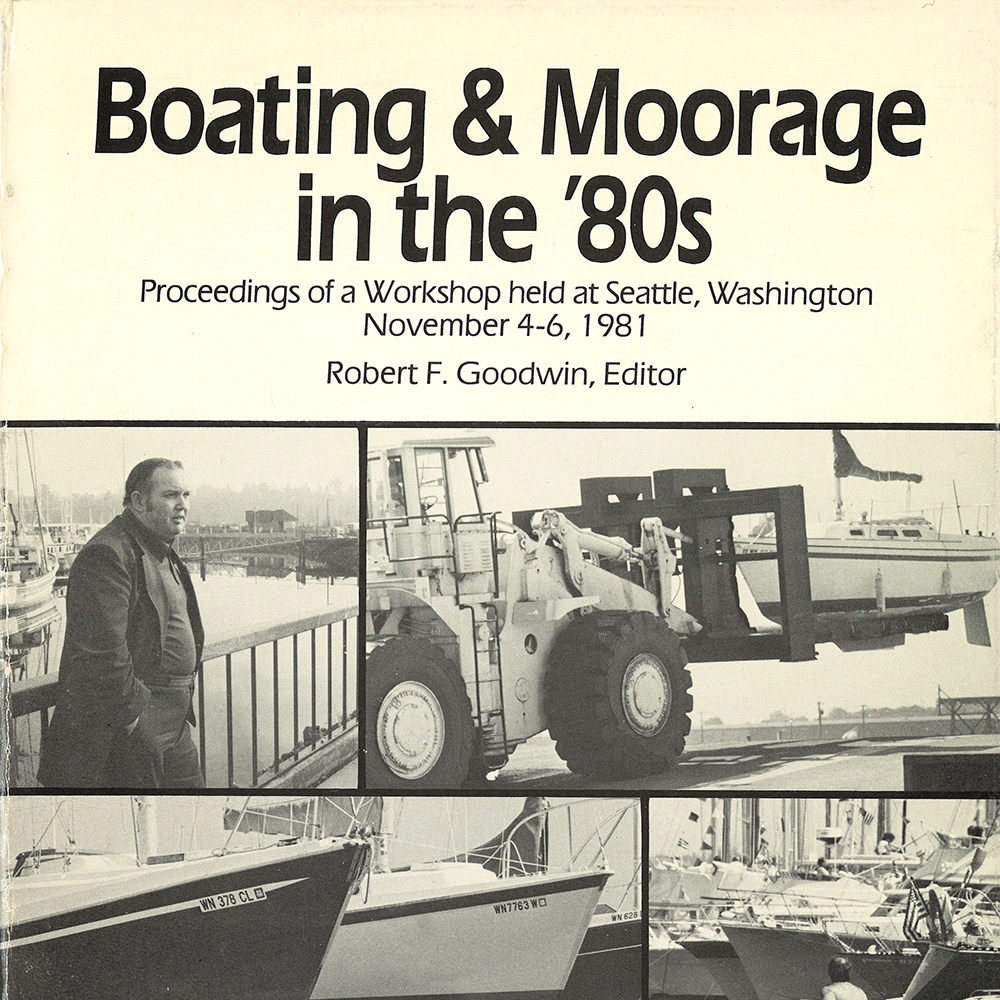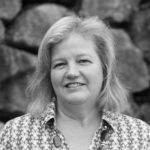A copy of the cover of Boating & Moorage in the ’80s, with permission from Washington Sea Grant, University of Washington (UW).
Puget Sound is one of the best natural environments in the world, rich in beauty, habitat, and recreational opportunities. The Sound also serves as a major marine commercial highway to and from countries around the Pacific Rim. The vibrant and varied waterfronts of Puget Sound are all important, from bustling commercial ports shipping and transferring goods, to marinas providing safe harbor for recreational boaters, to military bases serving submarines and aircraft carriers, to waterfront parks allowing everyday citizens to get their feet wet. Reid Middleton has been an integral part of building, preserving, and improving the waterfront community in the Pacific Northwest and the Pacific Rim throughout our 60 year history.
I remember as a young graduate searching in the newspapers, Yellow Pages, Who’s Who In Washington Engineering, and among waterfront journals in the University of Washington libraries (it was, after all, pre-internet) for all things related to waterfront projects, and coming across the firm name Reid Middleton over and over again. I knew then that this was the company that I wanted to work for. I was thrilled to get a chance to interview at and receive a job offer from Reid Middleton, and I have had the pleasure of working on interesting, challenging waterfront projects ever since.
John Olsen and others began the waterfront practice at Reid Middleton early on in the company’s history with the planning, design, and supervision of the construction of major marine facilities around Puget Sound. These projects included major port and marina facilities at Everett, Edmonds, Des Moines, that are still some of the premier marina facilities on the west coast. John Olsen was recognized throughout Puget Sound as the expert on marinas and boating and was prominently featured on the cover of the book “Boating and Moorage in the ‘80s.”
John continued to share his wisdom and knowledge for much of the 60 year history of Reid Middleton, serving as Director of Engineering before his retirement. John would look at a set of waterfront plans that I as a young engineer had been working on for weeks and almost instantly see things I had not thought about, often saying he had forgotten more than I had as yet learned, which felt very true. Other leaders in Reid Middleton’s waterfront practice provided mentoring and shared wisdom throughout the years, including Hugh Townsend and Bill Elmer, who also shared salty sea tales of cruising and sailing races as well.
Many of Puget Sound’s Port facilities are among Reid Middleton’s first clients and continue to be clients to this day. The Port of Port Angeles was Reid Middleton’s fourth client, and we have been an integral part of their marina facilities throughout the years, designing both the John Wayne Marina and recently renovating the Boat Haven at the Port. The Port of Everett has also been a continuous client over the years; we are now designing replacement structures for structures we first designed over 50 years ago that are now nearing the end of their design lives.
One of the biggest changes from when we first designed these structures is the environmental regulations and permitting requirements. The original Corps of Engineers permit drawings for the construction of the main Everett marina basin, with over 1,500 slips and over 20 acres of dredging and fill, was a five-page set of 8 ½ x 11 drawings with a few pages of application information. The permit application material for a project we are currently working on to replace a few of the docks at the Everett Marina will fill a three-ring binder. Our waterfront projects now include components that restore and enhance the natural environment in conjunction with the development.
Another change through the years has been the expansion of our waterfront practice from the Puget Sound area to the Pacific Rim, with projects in places such as Japan, Palau, Korea, and Honolulu. Working around the Pacific Rim on a variety of projects has been very interesting with differing codes, geotechnical conditions, and other factors that make design in each of these areas unique. Designing piling to be installed in the soft overlay material over glacial till in the Pacific Northwest is very different from designing piling anchored in the coral reefs of Palau and Honolulu. One particularly challenging endeavor was a marina project in Japan where the floats were fabricated in Washington and then shipped and installed in Japan. Not only were all the plans in metric but all the components had to fit in containers, adding some length limitations and unique criteria to the project.
The waterfront will continue to be a place of great interest and value and a place where many competing demands must be balanced. Reid Middleton’s role will continue to be at the forefront in marina, Port, and Navy facility design and in unique specialties such as the design of very large floating concrete structures. Willy Ahn, a senior engineer at Reid Middleton, and I are leading the effort on a technical publication on Very Large Concrete Floating Structures for the American Society of Civil Engineers (ASCE) National Ports and Harbor Committee, and I look forward to my upcoming role as Chairperson for the ASCE’s national Ports ’16 conference. Just like the first 60 years of Reid Middleton’s history, where we helped preserve the economic use of the waterfront while enhancing the recreational opportunities and environmental stewardship of this great resource, we look forward to continued involvement in waterfront facilities planning and design, and helping to shape the nation’s waterfronts for the next 60 years.



Through their participation in our Sea Grant conferences and workshops, and the annual meetings of the Pacific Coast Congress of Harbormasters and Port Managers, John Olsen and, later, Bill Elmer helped the ports and harbors community in the Northwest and beyond adapt to the changing regulatory environment and technological innovation in marina design and construction. Reid Middleton was always generous with its expertise at these educational and community-building events.
This was a nice article, Shannon, that brought back some warm memories of the 80’s and 90’s.
Thanks Bob, it was wonderful reflecting on all the great people I have had the honor to meet and work with that are involved with the waterfront community. In fact, today is the start of the 39th annual conference for the Pacific Coast Congress of Harbormasters down at Seatac, which as you noted is not only an amazing organization for gaining and sharing knowledge about marinas and harbor facilities, but also a place where many life-long friendships have been established and nurtured through the years.